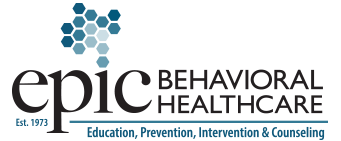Teens & Drug Use
- What is drug abuse?
- Drug dependence is a negative pattern of using a substance that leads to a number of problems, which may include needing more of a drug to get intoxicated (building a tolerance), difficulties that occur when the effects of the drug wear off (withdrawal), using more of a substance or for longer time than intended, and other life problems because of their use of the drug.
- Five stages of drug use:
- Access to drugs but no use thereof
- Experimentation or occasional use of substances
- Further increasing the frequency of using one or more drugs on a regular basis
- This stage may also include buying drugs or stealing to get drugs
- Regular use is established, and the teen has become preoccupied with getting intoxicated or high, and have developed problems in their social, educational, or family life as a result
- The teen only feeling “normal” when they are using drugs.
- During this stage, risk-taking behaviors like stealing, drug dealing, engaging in physical fights, unprotected sex, or driving while under the influence, having suicidal or homicidal thoughts.
- What drugs are used by teenagers?
- Illicit Drugs
- Cocaine
- Heroin
- Ecstasy
- LSD
- Marijuana
- MDMA (molly)
- Methamphetamine
- Mushrooms
- Synthetic cannabis (K2 or spice)
- Prescription Drugs
- Sleep medications
- Benzodiazepines (Xanax, valium)
- Seizure medications
- Opioids (codeine, fentanyl, morphine, oxycodone, tramadol, hydrocodone)
- Stimulants (amphetamines, methylphenidate)
- Over the counter medications
- Sudafed and Benadryl
- Dextromethorphan
- Loperamide
- Alcohol
- Inhalants
- gasoline, ammonia
- Dissociative anesthetics
- PCP, ketamine
- Others
- Steroids
- Dangerous effects of drug use in teens
- The younger a person is when they start to use drugs, the more likely they are to develop a substance-abuse problem and more likely they are to relapse into drug abuse when trying to quit.
- Juveniles who use drugs are more likely to have unprotected sex. This puts them at risk of pregnancy and STDs
- Substance use can mask emotional problems such as anxiety, depression, and mood swings.
- Anabolic steroids have been associated with impotence in men, as well as baldness, stunted growth, heart attacks, stroke, liver disease, and cancer.
- How parents can prevent drug use in their teens
- Clear communication about the effects that drugs can have on their teens physically, emotionally, and functionally as well as the parent’s expectations of their teen when it comes to drugs.
- Risk factors for teen drug abuse
- Family history of substance abuse
- Mental or behavioral health condition such as depression, anxiety, or ADHD
- Impulsive of risk-taking behavior
- A history of traumatic events
- Low self-esteem or feelings of social rejection
- Environment: factors include influence of family or friends throughout childhood. Quality of life, presence of abuse, or exposure to different stress can play a big role in the development of a drug addiction.
- Signs of drug use
- Paraphernalia
- Snorting: razor blades, rolled up dollar bills, straws
- Injection: belts, alcohol swabs, cotton balls, lighters, needles, spoons with burn marks, syringes.
- Smoking: glass or metal pipes, straws, tin foil, water pipes
- Physical
- Changes in eating or sleeping patterns
- Worsening physical appearance
- Slurred speech
- Tremors
- Weight gain/loss
- Blood shot eyes
- Loss of interest in activities
- Unusual tiredness
- Psychological
- Appearing “spaced out”
- Paranoid, fearful
- Periods of increased energy
- Unexplained changes in attitude/personality
- Bad grades
- Paraphernalia
- Illicit Drugs
Sources
